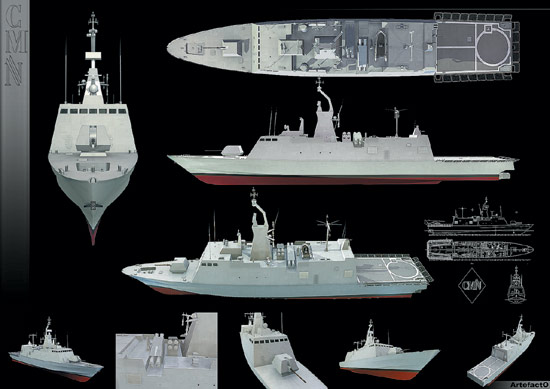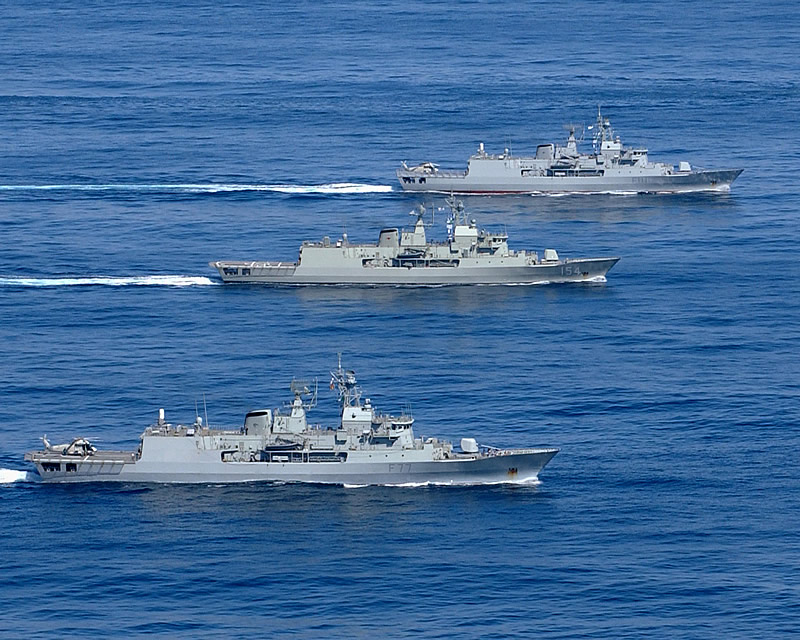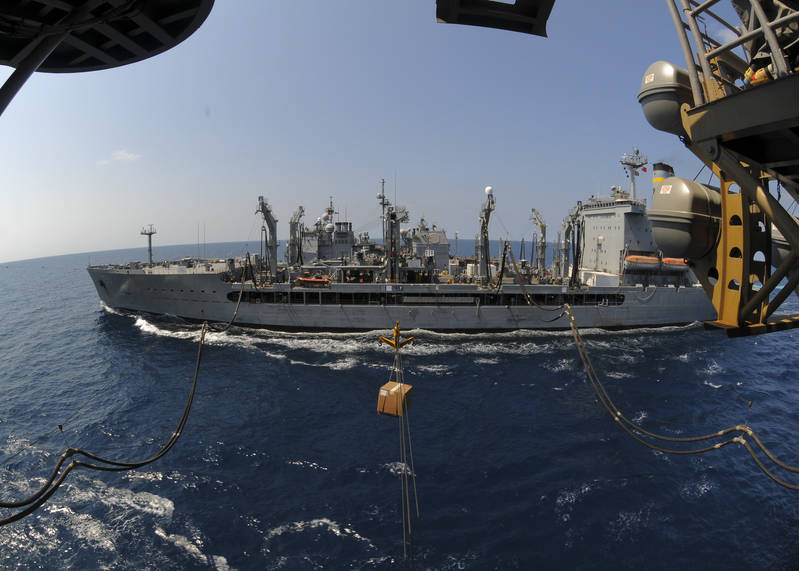
Welcome to MSW’s Scuttlebutt! Here’s the news for the day.

On Display - HMS SCYLLA
MSW crew-mate An Chu (AnChu1939) shares one of his latest builds, WSW Models 1/700 scale Dido-class AA Cruiser HMS Scylla in this "On Display" feature.
On Display - IJN Submarine I-14
Bob Cicconi [ BOBCICCONI ] prepares to launch from the deck of the IJN Submarine I-14 in this "On Display" feature.
Feature - IJN Yamato, Ten-Ichigo
MSW Crew--member Louis Carabott [loucar] comes over the horizon with the mighty IJN Yamato as she heads off to meet the American forces around Okinawa in April 1945, in this MSW feature.
There will be no edition of Scuttlebutt tomorrow. I will be bringing my son to a doctor's appointment in New Orleans.

First Sea Trials for Baynunah
Source: Constructions Mécaniques de Normandie
Baynunah has proved her good sea keeping qualities.
The Baynunah Corvette First of Class, which has been launched end of June 2009 in CMN shipyard, has carried out mid-January 2010 her first sea trials in Cherbourg roads, with sea states up to 4 which proved her good sea keeping qualities.
Further tests and trials will be performed later on and the Vessel is due to be delivered by mid-2011 to the UAE Navy.

BACKGROUND NOTE:
The BAYNUNAH contract was signed by the UAE Armed Forces at the end of 2003.
This contract covers the design and construction of a new class of 72-metre multipurpose missiles corvettes for the UAE Navy. The initial contract covered four units, with an option for two additional ships. This option was exercised early in July, 2005.
The design of the vessels and the construction of the First of Class will be performed by CMN in their shipyard in Cherbourg, France. The remaining units will be built in the UAE, in the premises of Abu Dhabi Ship Building (ADSB), which is acting as prime contractor, under the technical supervision of CMN.
CMN will provide transfer of technology services, as well as integrated logistic support (ILS) and various training services.
BACKGROUND NOTES:
-- Seastar is a non-rotating active phased array radar for naval surface surveillance. The system automatically detects and tracks asymmetric threats and very small objects such as swimmers and periscopes in all weather conditions. Seastar can also be used for helicopter guidance. Seastar is internationally marketed as Sea Watcher 100.
-- Gatekeeper is a 360° panoramic electro-optical surveillance and alerter system based on IR/TV technology. Designed to counter emerging asymmetric threats down to small boats and swimmers, Gatekeeper increases short-range situational awareness in littoral environments.
Center for Surface Combat Systems Provides Training to Support Navy's Newest Ship
Source: US Navy
PENSACOLA, Fla. --- Six years of training program development came to fruition when the second ship in the revolutionary Littoral Combat Ship class, USS Independence (LCS 2) was commissioned in Mobile, Ala., Jan. 16.
The Center for Surface Combat Systems (CSCS), part of the Naval Education and Training Command (NETC), played a significant role in the ship's development by leading the LCS Program training plan that will enable the ship's crew to conduct global operations in support of the Maritime Strategy.
A 419-foot aluminum trimaran, Independence is the first of its design in the surface fleet. The ship is part of an innovative manning construct that reduces crew size, demanding each Sailor maintain high levels of proficiency in multiple fields. Although about the same physical size as a traditional Navy frigate with a crew of 200, the Independence is staffed by a crew of only 40 Sailors that can be augmented by detachment specialists for specific missions.
"LCS is the future of our surface Navy," said Vice Adm. D. C. Curtis, commander, Naval Surface Forces. "This program will complement the strengths of larger warships. LCS will be a deterrent of green and brown water threats; the flexibility, versatility, and smart design of Independence make it well suited for joint operations."
"The development of LCS training to enable the ship's capabilities has truly been a cross-enterprise project," said Capt. Stephen Hampton, the second of two CSCS commanding officers to oversee the LCS training project. "Capt. Roger 'Rick' Easton, who I relieved, was the first. He and our CSCS team laid the groundwork for the new LCS training construct, definitions, requirements, and training pipelines. My challenge has been to take the foundation that Capt. Easton laid, and refine those training requirements, as well as introduce system-centric procedures that can be measured with qualification metrics, measures, and standards. It was critical to identify training systems that support a continuum across the range of required maintenance, operations, and employment skills and abilities so that our Sailors are prepared to fight and win."
To ensure LCS Sailors are well-prepared to operate their revolutionary platforms, an LCS training pipeline was developed to teach fundamental systems knowledge. The pipeline is already proving effective for the crew of USS Freedom (LCS 1), scheduled to deploy next month a full two years ahead of schedule. LCS systems training commenced for Independence's rotational blue and gold crews in 2005.
Since the inception of training, CSCS learning sites have provided operations, combat, and weapon systems training totaling more than 2,900 training days to Independence crewmembers. This equates to more than one-fourth of all the training received by Independence crewmembers.
A Train-to-Qualify (T2Q) process was defined that connects the initial LCS training model to Personnel Qualification Standards (PQS). T2Q is a new concept for the surface force that shifts qualification training from the ship to shore training, meaning that LCS Sailors report aboard ready to stand their watch and execute assigned duties.
"LCS 2 PQS is different from PQS on traditional ships, by removing subjectivity," said Hampton. "It employs Objective Measures, Metrics and Standards (OMMS) that require trainee performance to be measured against specific criteria and specific procedure. OMMS ensures that each trainee achieves a common standard that results in the LCS commanding officers and fleet leadership having confidence in the abilities of the new personnel they receive."
The LCS Shore-Based Training Facility (SBTF), a simulator operated by CSCS, is the final step in the LCS Train to Qualify process. Robert Shifflet, director of training at facility, and his team of nine instructors administer LCS Capstone Training.
"The training is unique," said Shifflet. "The simulator is designed to look and feel like an LCS ship's bridge while maneuvering at sea. It integrates synthetic radar scenarios with a corresponding video display that creates a very life-like tactical training environment for Integrated Command Center (ICC) and bridge watchstanders.
"The fully integrated training is the first of its kind in surface warfare," added Shifflet. "It is unique in that it delivers bridge and ICC coordinated command and control procedures for platform, system, and people employment."
"The LCS class training structure, training system approach, and training process, particularly the development of high fidelity SBTFs in the Fleet Concentrate Areas (FCAs) similar to that of the aviator and submarine community, is a postitive step forward for the surface force," added Hampton. "In the future, as the training matures, LCS Sailors will be ready to operate and employ LCS systems against a more realistic set of scenarios; perhaps better than any other class in surface ship history."
Anti-Ship Missile Defense Upgrade Commences On First ANZAC Frigate
Source: BAE Systems
BAE Systems has begun modifying the first of the Royal Australian Navy’s ANZAC Class frigates to be upgraded under the Anti-Ship Missile Defence (ASMD) Upgrade Project.
HMAS Perth entered the Henderson dockyard in Western Australia on 18 January on schedule.
The ASMD Upgrade project is being managed by the Defence Materiel Organisation supported by BAE Systems and Saab Systems under an alliance contracting arrangement. The upgrade will significantly improve the anti-ship self-defence capabilities of the ANZAC Class by integrating:
--The leading edge CEA Phased Array Radar (PAR)
--The Vampir NG Infrared Search & Track (IRST) system
--The Sharpeye Navigation Radar Systems (NRS), and
--An upgraded Combat Management System (CMS) including an improved Operations Room layout.

Jason Beer, BAE Systems Maritime Through-Life Support General Manager, said today that the platform integration of these systems required significant structural modifications.
“This includes replacement of both the frigate’s forward and aft masts, which has required us to develop innovative design solutions to minimise the impact on the ship’s weight and stability,” he said.
Mr Beer said that BAE Systems work during the installation phase in HMAS Perth would create more than 150 highly skilled jobs at its Henderson base in WA.
“The experience gained over the past five years of designing and developing this project has enabled BAE Systems Maritime Business Unit to enhance critical skills in complex maritime combat systems integration and platform systems integration.
“These skills are crucial to maintaining the capability that will be needed for next generation naval programs such as the Future Frigate and the Offshore Combatant Vessel projects,” Mr. Beer. said.

USS Sargo SSN-583
Today’s website is the biography of USS Sargo SSN-583. Enjoy.
This Day in U.S. Naval History
1862 - Union gunboats destroy Confederate ships during a victory in the Battle of Elizabeth City.
1900 - The first naval governor of Guam, Commodore Seaton Schroder, is appointed.
1960 - USS Sargo (SSN 583) surfaces at the North Pole.
Photo of the Day

The forward-deployed amphibious assault ship USS Essex (LHD 2) receives supplies from the Military Sealift Command fleet replenishment oiler USNS Tippecanoe (T-AO 199) during an underway replenishment.
Gator











